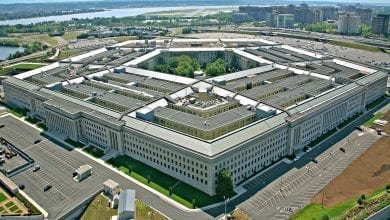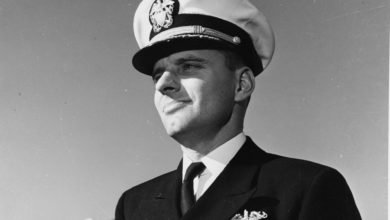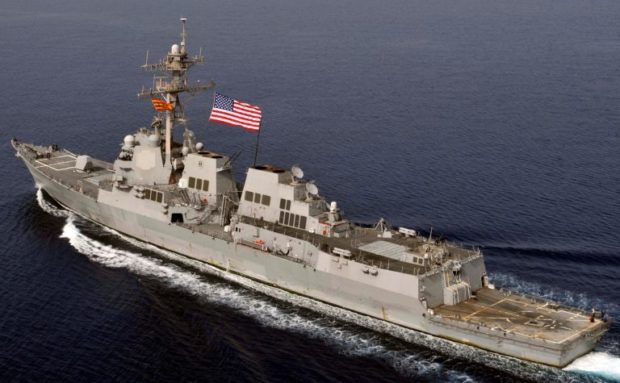9 Notable Presidents Who Served
Presidents Day was initially created to observe the birthday of our first president, George Washington. But nowadays, we use it to celebrate all U.S. presidents.
With that in mind, do you know how many presidents have served in the U.S. military? There have been many, but here are some of the most notable:
George Washington
No military statesman was more influential than the founder of our nation.
Washington began his career in the Virginia militia in 1753 and led a force of 300 colonials to current-day Pittsburgh in the first engagement of the French and Indian War. His reputation soared after that, and he rose to the rank of brigade commander.
Washington resigned his military commission in 1758, but by 1774, he was fully behind the idea of revolution and accepted leadership of the volunteer Virginia militia. He was unanimously elected in June 1775 to be the general and commander in chief of all Continental forces.
For eight years, Washington managed to preserve his colonial forces despite many obstacles, and that was a feat that is still revered today. According to the U.S. Army Center of Military History, “only a soldier endowed with extraordinary foresight, personal integrity and self-discipline could have provided the necessary leadership. The claim can be made that without Washington, the Revolution would not have succeeded.”
After the war, Washington dismantled his army and returned to life as a private citizen, but in 1787, he was put in charge of the Constitutional Convention that led to the ratification of our Constitution. This led to Washington’s inauguration as the first president of the United States in 1789.
Dwight D. Eisenhower
Of the seven presidents who served in World War II, none achieved higher glory than Eisenhower, one of only a handful of men to ever earn the rank of five-star general.
Eisenhower graduated from West Point in 1915 and served stateside in World War I, training troops for the tank corps. By the time the U.S. entered World War II, his reputation for strategy was so highly regarded that he was named commanding general of the U.S. Army in the European theater.
After leading successful Allied landings in Sicily and Italy, he moved further up the chain, being named the supreme allied commander in Europe. He was put in charge of planning D-Day — the largest land, air and sea assault in the history of modern warfare. It was an Allied success.
Eisenhower continued to lead the Allies to victory. On May 7, 1945, about a week after Adolf Hitler committed suicide, Eisenhower accepted the Germans’ unconditional surrender.
A few years after the war, Eisenhower resigned from the Army but returned in 1950 to again become the supreme allied commander of Europe, this time so he could direct the buildup of military forces for the newly established North Atlantic Treaty Organization. When he returned to the U.S. in 1952, he accepted the Republican presidential nomination and won, becoming our 34th president. He served until 1961.
Ulysses S. Grant
Grant has always been considered one of the prime saviors of the Union during the Civil War, but his military career began long before that.
Grant graduated from West Point in 1843 and fought in the Mexican-American War, which led to the expansion of the U.S. in the west. He resigned from the Army as a captain in 1854 but rejoined at the outbreak of the Civil War. He became the brigadier general of the 21st Illinois Volunteer Infantry, and his troops were involved in a string of Union victories.
On March 17, 1864, Grant was given formal control of all Union armies and relentlessly pursued the Confederates to drive them back south. Despite heavy northern losses, Richmond fell to Union troops, and in April 1865, the Confederates surrendered.
Grant was elected president three years after the war. He served two terms and, before his death, published his personal memoirs of his military career, which is a highly regarded read to this day.
John F. Kennedy
Kennedy had graduated from Harvard and was continuing his education at Stanford when he decided to join the Navy, receiving a commission in the Naval Reserve just before the Pearl Harbor attacks happened. He was 24 when World War II began.
On Aug. 1, 1943, Kennedy was the commanding officer of a patrol torpedo boat in the Pacific. During a night patrol, his boat, PT 109, was cut in half by a Japanese warship whose crew didn’t even know they had hit it. Kennedy was thrown into the remaining hulk of the ship, but was able to spend hours rescuing other injured members of the crew.
Kennedy and his surviving crewmates swam 3 miles to a tiny island in the distance, with Kennedy towing a badly burned crewmate by a life jacket strap that he held in his teeth. After four days of searching for rescue, Kennedy and another sailor swam to another island, where they gave a native a message carved on a coconut to take to a PT base on another small island.
A day later, the native returned to escort Kennedy to the PT base, where he was greeted warmly and put on another PT boat to rescue the rest of his crewmates.
For his heroics, Kennedy was awarded the Navy and Marine Corps Medal — the highest noncombat decoration awarded for heroism — as well as the Purple Heart. The incident was classified until 1959, two years before Kennedy became president.
George H.W. Bush
Bush was only 17 when Pearl Harbor was attacked, but it made him want to join the Navy and become a pilot. He enlisted on his 18th birthday and was commissioned in the U.S. Naval Reserve almost a full year later, making him one of the youngest naval aviators in the war.
By spring 1944, Bush was fighting in air battles in the Pacific. During an air raid on a Japanese installation, his aircraft was hit and he had to bail out over the ocean, having already successfully dropped his bombs on their intended targets. Bush floated for hours in an inflatable raft before being rescued by the submarine USS Finback.
Bush stayed on the sub for a bit to help rescue more fallen pilots, but he eventually went back to the skies, flying missions over the Philippines before being sent back to the states to train other pilots. He was honorably discharged when the war ended.
Bush flew 58 combat missions during the war and received the Distinguished Flying Cross, three Air Medals and the Presidential Unit Citation.
Theodore Roosevelt
Roosevelt served in the New York National Guard from 1882 to 1886. When the Spanish-American War that liberated Cuba from Spain broke out in 1898, Roosevelt lobbied for an Army commission and got it. He led the 1st U.S. Volunteer Cavalry Regiment, famously known as the “Rough Riders,” on a charge up Cuba’s San Juan Heights that turned the tide of the war in America’s favor. In 2001, he was posthumously awarded the Medal of Honor for it.
Roosevelt was elected president in 1901. He was instrumental in enacting much of the legislation that modernized the National Guard.
Zachary Taylor
Taylor’s military career spanned more than 40 years. He joined the Army in 1808 and fought in the Northwest Territory during the War of 1812. He spent the next three decades at various garrison posts and fought in the Black Hawk War and the Second Seminole War. By the mid-1840s, Taylor was put in command of troops along the Rio Grande and accumulated several battle victories during the Mexican-American War.
Taylor retired from the military in 1847 and became our 12th president a year later. He unfortunately died of gastroenteritis on July 9, 1850, having served only 16 months in office.
Andrew Jackson
Jackson joined the Army at age 13 as a courier during the Revolutionary War. He served in the War of 1812 as a major general and was successful in pushing the British out of several southern posts, including at the Battle of New Orleans. After that, he commanded forces against the natives in the First Seminole War.
These successes led to his presidency from 1828 to 1832.
Jimmy Carter
Carter graduated from the U.S. Naval Academy in 1946 and served on two battleships and two submarines, including USS K-1 — the first submarine built after World War II, which is where he spent the first half of the Korean War.
Carter was eventually transferred to temporary duty with the Naval Reactors Branch of the U.S. Atomic Energy Commission to help design and develop nuclear propulsion plants for naval vessels. He was honorably discharged in 1953 and went on to serve as our 39th president from 1977 to 1981.
Source: Department of Defense
Content created by Conservative Daily News is available for re-publication without charge under the Creative Commons license. Visit our syndication page for details.



